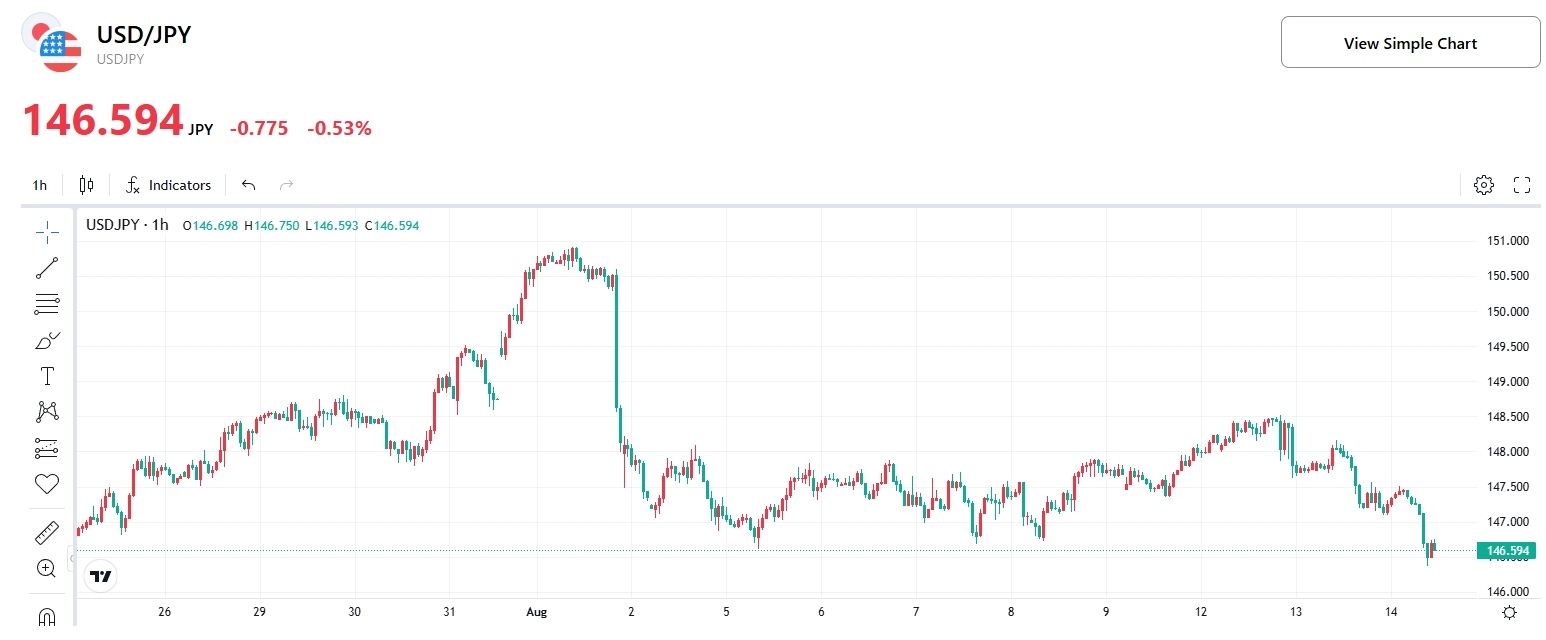BOJ Faces Internal and External Pressures as the Underlying Inflation Justification Falters, Bessent Calls Out Inaction

TradingKey - As the prospect of Federal Reserve rate cuts strengthens and the Bank of Japan’s (BOJ) rationale of “underlying inflation” comes under increasing scrutiny, the USD/JPY exchange rate has continued to decline since August. Analysts believe the BOJ may ditch its vague “underlying inflation” gauge, paving the way for a more hawkish stance, with a rate hike in October and a stronger yen on the horizon.
Since August, the USD/JPY exchange rate has fallen from the 150 level to around 146.50, a year-to-date decline of 6.64%. Against the backdrop of mounting internal and external pressures on the BOJ, the yen’s appreciation trend could continue.

USD/JPY Exchange Rate Chart, Source: TradingKey
Domestically, although the core CPI has exceeded the BOJ’s 2% target for over three consecutive years, the central bank has hesitated to raise interest rates further, repeatedly citing that “underlying inflation” has not yet reached the target as a reason to keep rates unchanged — marking four consecutive meetings with no change since the January rate hike.
“Underlying inflation” is the justification the BOJ has used to maintain its current monetary policy stance, arguing that this indicator better reflects domestic demand and wage growth. However, the BOJ has yet to provide a clear definition or a single metric to measure this inflation trend.
Some members of the BOJ’s Policy Board have begun to worry that second-round inflation effects are forming, with inflation becoming entrenched in corporate pricing behavior and public inflation expectations, forcing them to take inflationary risks more seriously.
Among the nine BOJ board members, three have emphasized that the persistent rise in food prices could trigger broader and more persistent inflation.
During the July meeting, one member stated that policymakers should shift their communication focus from “underlying inflation” to actual price movements and outlooks, as well as output gaps and inflation expectations.
In other words, there is already internal momentum within the BOJ to move away from the ambiguous underlying inflation gauge. Analysts believe this potential shift could signal a more hawkish turn by the BOJ in the near future.
According to a Bloomberg survey, about 42% of economists expect the BOJ to raise rates in October, while one-third believe the move will come in January next year.
At the same time, the BOJ is facing external pressure from the U.S. government, which has rarely commented on foreign central bank policies.
On Wednesday, August 13, U.S. Treasury Secretary Scott Bessent said the BOJ is “behind the curve” in addressing inflation and needs to control inflation by raising interest rates. Bessent also said there is a high likelihood of a 50-basis-point rate cut by the Fed in September.
Former BOJ official Hideo Kumano said Bessent may be attempting to weaken the dollar through his comments on U.S. and Japanese monetary policy.
Therefore, under the combined influence of a potentially more hawkish BOJ and a weakening dollar, the yen faces significant upward pressure.







